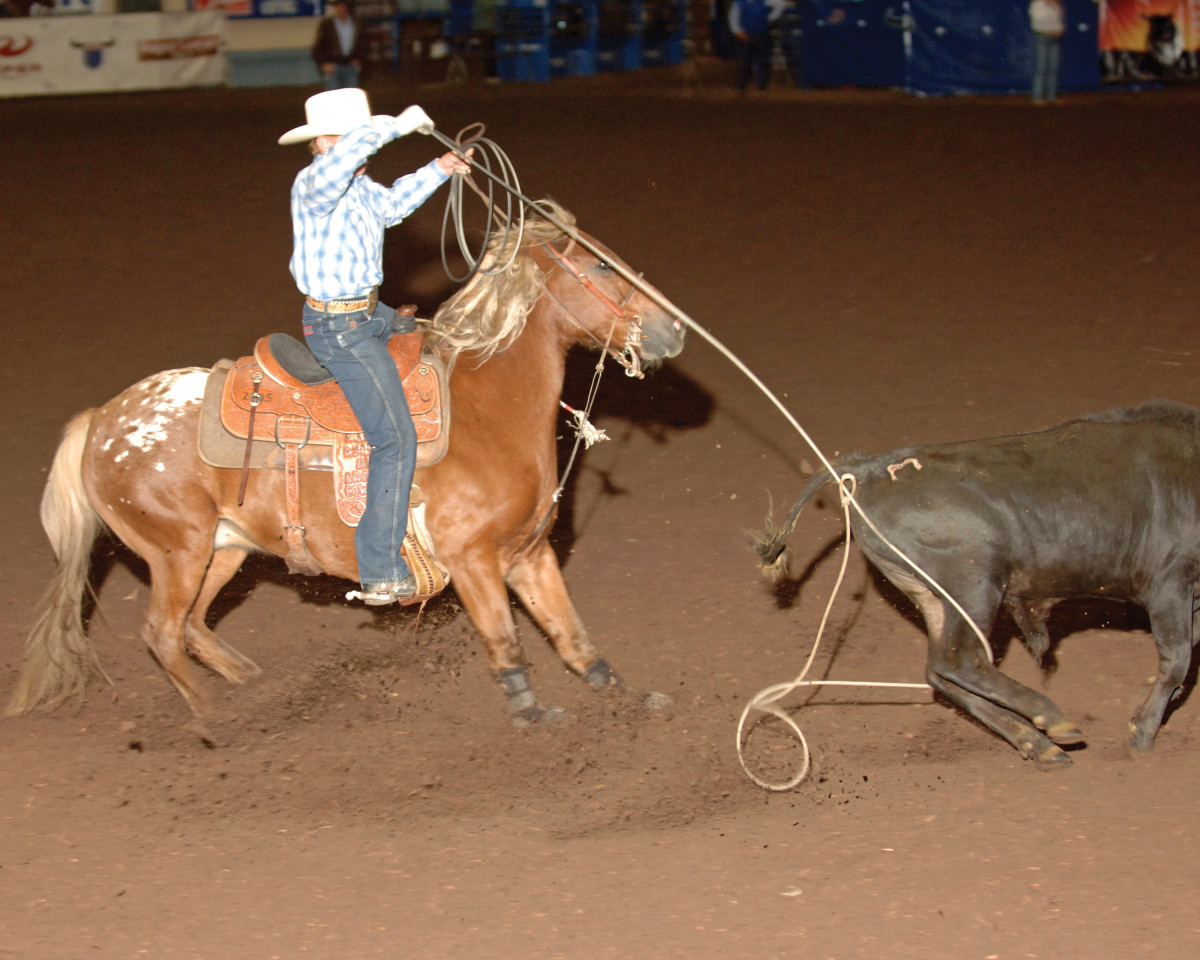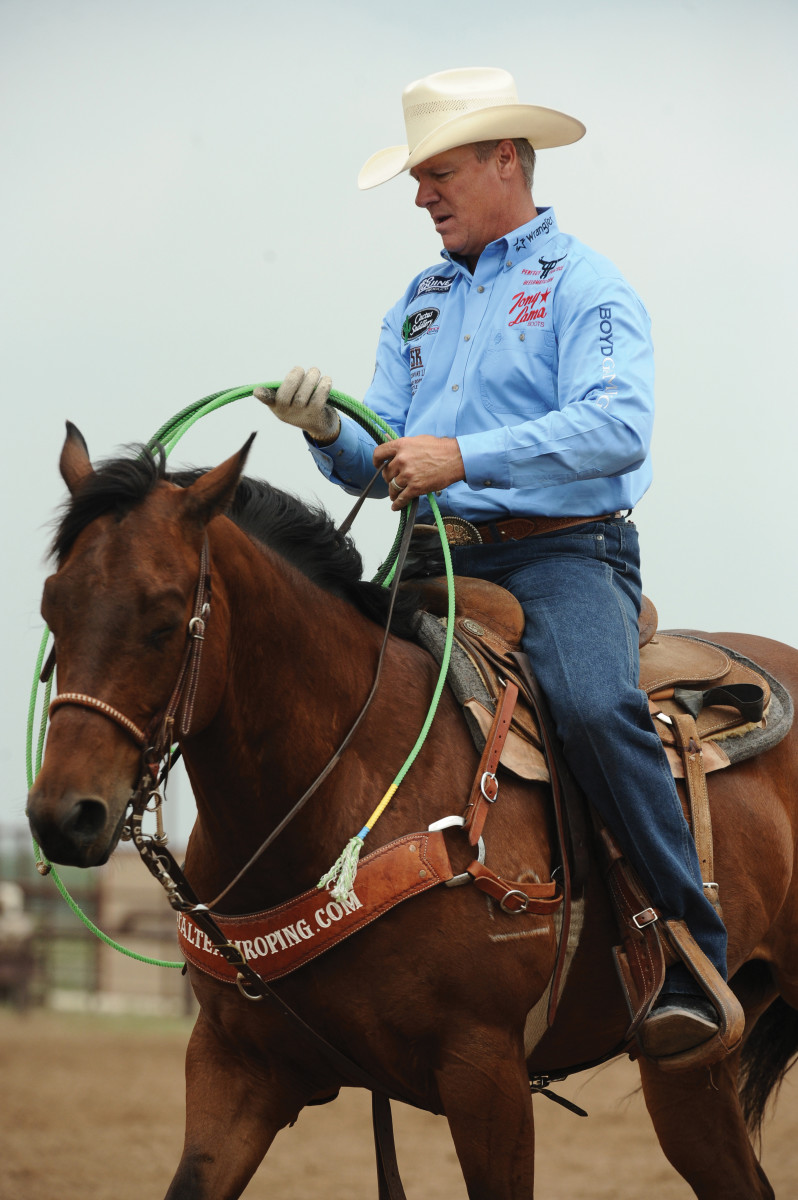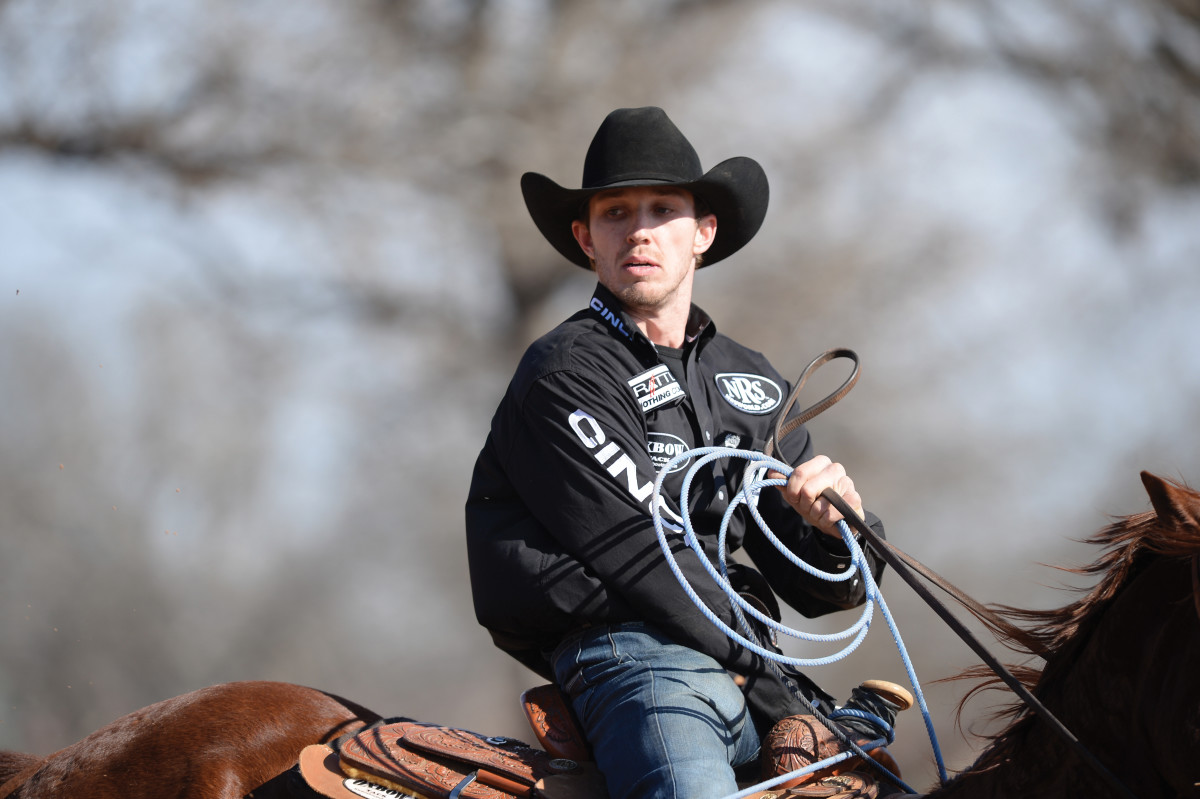This year’s Cinch National Finals of Team Roping marks the 33rd edition of the storied event. It’s the roping at which nearly every top talent in the game cut their teeth—learning the ins and outs of roping for big paydays under the bright lights alongside their heroes, with famed announcers booming their names and music blasting in the high-pressure short rounds.
New this year at the Cinch USTRC’s National Finals of Team Roping, the association presents the Resistol Junior Champions NFTR Bonus Awards, giving a $1,000-bonus, 40X Arena felt hat, Wildfire straw and Gist buckles to the high-money 18-and-under header and heeler of the event.
“This program gives the up-and-coming ropers a little more opportunity and something to look forward to,” said John English, manager of team roping operations for the USTRC. “These young people are the future of our organizations, so adding a new program for them is really important to us.”
To help the next generation of great ropers (and ropers young and old alike) prepare to step up to the famed Cinch NFTR challenge, The Team Roping Journal tapped some of roping’s greats to get their mental-strategy advice for roping’s biggest jackpot stage.
Aaron Tsinigine
US Finals History: First in the 2013 US Open, fifth in the 2010 #15 Shoot-Out
Best advice: The US Finals have to be just one steer at a time. That’s it. I always would go off by myself after the first steer went good. The first year I went, Erich Rogers and I drove out and camped there and lived on Love’s beef jerky. We had a few bucks to enter the Lazy E, and I was heeling and we entered the Open against Clay Tryan and everyone else. At that time, I didn’t even know I was going to be a header. I like the steers going down the right wall there. You just need four clean runs, so you’ll win a good check out of there.
Clint Summers

US Finals history: Fourth in the #10 Shoot-Out in 2005, ninth in the #11 Shoot-Out in 2006, seventh in the #13 Shoot-Out average in 2007, second in the 2017 US Open
Best advice: Going to the US Finals is a big deal, and you can get to looking at it differently than anything else you go to all year. But you’ve got to focus, and look at it like it’s nothing different than roping at the house. That’s one of the hardest things about it because you want to do so good because it pays so much money, and it’s the biggest thing you get to go to. But it can’t be anything different. Don’t change much—stick to what you know, and remember your basics. However you know how to catch, you need to stick to that. When you get out there and you see other kids who you’ve never met roping so good and pulling off shots, you want to try to speed up and be like that, but stick to your game. I know that drill all too well. When I see Dustin (Egusquiza) and Kaleb (Driggers) go out there and reach and bomb, I think I’ve got to do that, but I need to stick to what works for me. Same for you: Keep your focus on your game and don’t try to change it to anybody else’s.
Clay O’Brien Cooper

US Finals History: Second in the 2006 Open, third in 2011, first in 2013, fifth in 2016
Best advice: Like any type of competition that is significant with a good payoff and lots of teams, your preparation is key to being ready and having confidence so, when you go there, you know that you have a legitimate shot at being competitive.
Between steers when you’re there, tend to business. I usually stay back in the warmup area and sometimes I just sit on my horse and wait my turn. If there are rotations before me, I have a strategy of how much time previous to my rotation I’m going to get my horse out, get him moving and swing my ropes. I go through the procedures. But also, I’m in a mindset of being in my own space. I probably overdo that a little bit, but it’s just the way I developed my routine. When I’m riding around and doing things, I might visit with my buddies there doing the same thing. I might chitchat a little here and there but, at the same time, you’re mentally rolling the thoughts through your mind about what you’re about to do and how you’re going to do it. Analyzing the steers, the setup, the situation.
At that setup with a heel barrier, it seems like, for me, what I have to watch out for is the slow steer. I always kept my horse in my hand until I recognized what the steer was going to do. I have my mind looking for the slow steer. The first thing you want to do is draw really good, but the last thing you want to do is break a barrier on that good steer. Nine times out of 10, when you are looking for that and you see the slow steer, you’ve already got a hold of your horse and you’re not going to break the barrier. If you’ve got a steer that leaves, you’ve got to get going as fast as you can. He’s going to beat you, and you’ll be fine. That’s how I approach scoring on the heel side. The only time I ever made a mistake is when I wasn’t looking for that slow one and I started and, BAM, I shot myself in the foot.
Drew Horner

US Finals History: First in #15 Shoot-Out in 2010, third in #12 Preliminary in 2006
Best advice: The biggest thing for me was to enjoy the moment entirely. That was so good because it cleared my head of any stress because I always wanted to win all the time. I grew up with the US Finals, but keeping myself in the moment was key. It was SO fun there. You go to the goat roping, go rope the dummies in the lobby and enjoy it. It was so much more fun with a free brain. I’d just focus on my start and my run and go to the next arena. Now I have memories that I will never forget because I wasn’t so blinded by the pressure.
Wesley Thorp
US Finals History: First in #11 Shoot-Out in 2012, first in #13 Prelim in 2013, first in #13 Prelim and #13 Shootout in 2015, first in #15 Shoot-Out in 2015
Best advice: The main thing I’d say is to get there early and watch one or two ropings before you. See how the steers are and what the setup is like. That arena is smaller and shorter, so watch where the runs are shaping up and where you’ll be in the arena.
My thought was always to make myself ride farther down the arena and watch my angles. Observe the situation, the setup and the arena. I always try to give myself 30 minutes to myself before I rope to spend some time to myself and go over my game plan. I try to put myself in the situations I’ve prepared for at home.
I like to take it one steer at a time. The start there is a World Series start, but make sure to watch it and see how the steers are leaving. The eye is so close to your horse. If your horse leaks, you’ll break it. If they’re leaving sharp, be on go. But if not, make sure you let the steer make the first move. Make sure you’re watching the steer so you don’t run over yourself at the barrier. TRJ











